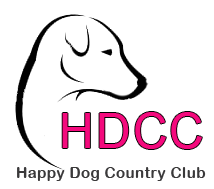Why dogs gently grab your arm without actually really biting: Understanding the behavior
Dog owners are often puzzled when their dog gently takes their arm or wrist into their mouth without applying pressure or biting. While it may seem unusual or concerning, this behavior is typically harmless and often rooted in natural canine instincts. Understanding the context and motivation behind it is key to responding appropriately and fostering a healthy bond with your dog.
- Play Behavior and Excitement:
Mouthing is a natural form of interaction for dogs, especially puppies. It’s how they explore their environment, interact with littermates, and engage in play. When your dog gently grabs your arm, it may simply be expressing playful excitement.
Professional insight: Observe your dog’s body language. Relaxed posture, wagging tail, and a loose mouth indicate that the behavior is friendly and non-aggressive. - Attention-Seeking or Comfort-Seeking Behavior:
Some dogs learn that gently mouthing their owner’s arm gets a response—whether it’s eye contact, talking, or physical touch. In this case, the behavior becomes a learned way to seek attention. In other situations, especially when a dog is feeling anxious or unsure, it may use gentle mouthing as a form of self-soothing or reassurance.
Training tip: When you don't want this behavoir encourage alternative attention-seeking behaviors, such as sitting calmly, offering a paw, or following a cue. - Social Bonding and Pack Behavior:
In canine social structures, dogs often use their mouths gently during bonding rituals—such as licking or mouthing each other’s faces or necks. Your dog may attempt to engage in similar social interaction with you, viewing you as a trusted member of its “pack.” - Expression of Affection and Trust:
When a dog softly holds your arm in its mouth without applying pressure, it can be a sign of affection and deep trust. This gentle behavior is often a way for the dog to express emotional closeness, much like a canine version of a hug.
Note:As long as the behavior remains gentle, without any signs of tension or aggression, it is generally considered safe and positive. - Overstimulation or Emotional Regulation:
In certain cases, dogs may use mouthing as a coping mechanism when they are overstimulated, frustrated, or unsure how to process a situation. This can happen during highly stimulating environments or sudden changes in routine. While the action may still be gentle, it can signal the dog’s attempt to self-regulate.
Preventive approach: Help your dog navigate high-energy environments through structured exposure, rest periods, and calm reinforcement.
When you should or should not Intervene?
✅ Acceptable behavior:
- The dog is gentle and relaxed.
- The behavior occurs in a playful or affectionate context.
- There is no tension, growling, or biting pressure.
⚠️ Red flags:
- The behavior becomes persistent or demanding.
- The dog appears frustrated, overstimulated, or tense.
- The mouthing causes discomfort or damages clothing.
- Children are involved and may misinterpret or react fearfully.
Recommended action:
Teach clear cues such as "No", “leave it,” “enough,” or “stop” to help the dog understand when contact is no longer appropriate.
Final Thoughts
Gentle mouthing or holding of your arm is usually a normal, non-threatening behavior that reflects trust, affection, or a desire to engage. Understanding the context—whether playful, social, or emotional—is key to interpreting your dog’s intent. By reinforcing appropriate behaviors, maintaining calm leadership, and observing your dog’s emotional signals, you can support a respectful and rewarding human-dog relationship.
